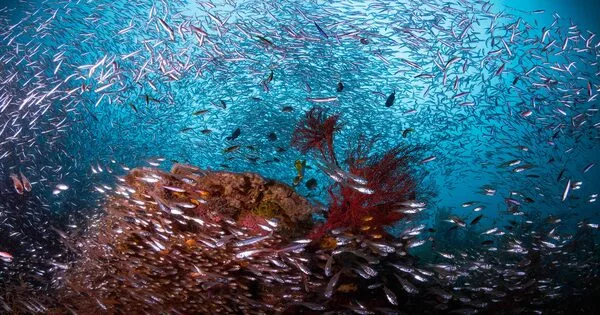According to a recent Rutgers study, as temperatures rise, predator-prey interactions will prevent species from adapting to the conditions under which they can thrive.
The latest study, which was published in the journal Proceedings of the Royal Society B, paints a conflicting picture of ocean health. Large species and commercially important fisheries will not only move out of their historical ranges as temperatures rise, but they will also likely be fewer in number even in their new geographic areas.For example, a cod fisherman in the Atlantic may still find fish 200 years from today, but in much smaller numbers.
From a fishing standpoint, this means that while the species we fish today will be present tomorrow, they will not be in the same abundance. Overfishing becomes simpler in such a scenario since population growth rates are low. ” One of the study’s coauthors is Malin Pinsky, an associate professor in the Department of Ecology, Evolution, and Natural Resources at Rutgers. “Warming combined with food-web dynamics will be like blending marine biodiversity.”

Previous research on shifting habitat ranges concentrated on the direct effects of climate change on certain species. While these “one-at-a-time” species projections provide insights into the composition of ocean groups in a warmer future, they mostly ignore how food-web interactions would affect the rate of change.
The new study investigated trophic interactions—the process by which one species gets nourished at the expense of another—as well as other food-web dynamics to establish how climate change impacts species ranges.
The researchers discovered that predator-prey interactions drive many species, particularly large predators, to shift their ranges more slowly than climate.
“Warming coupled with food-web dynamics will be like putting marine biodiversity in a blender.”
Malin Pinsky, an associate professor in Rutgers’ Department of Ecology, Evolution, and Natural Resources
“The model implies that during the next 200 years of warming, species will continually reorganize and alter their ranges,” said lead author E. W. Tekwa, a former Rutgers postdoc in ecology, evolution, and natural resources who now works at the University of British Columbia. “Even after 200 years, marine species will still lag behind temperature variations, especially those at the top of the food web.”
Millions of species are moving poleward as the climate rises, resulting in a major restructuring of life on Earth. However, our knowledge of these processes has largely disregarded a crucial aspect of life: animals and other organisms must eat. Researchers have filled this information gap by investigating how species’ migrations are influenced by the basic desire for nutrition.

The researchers created a “spatially explicit food-web model” that took into account factors like metabolism, body size, and appropriate temperature ranges. By taking climate change into account, their model found that dynamic trophic interactions limit species’ capacity to respond swiftly to rising temperatures. They also discovered that larger-bodied top predators stay longer in historical environments than smaller prey, owing to the arrival of new food sources in their pre-warming ranges.
“These dynamics will exist not only in one place but internationally,” Pinsky said. “That does not bode well for marine life, and this is not a commonly recognized effect.”
“Body-size and food-web interactions mediate species range shifts under warming,” April 12, 2022, Proceedings of the Royal Society B: Biological Sciences.
DOI: 10.1098/rspb.2021.2755





